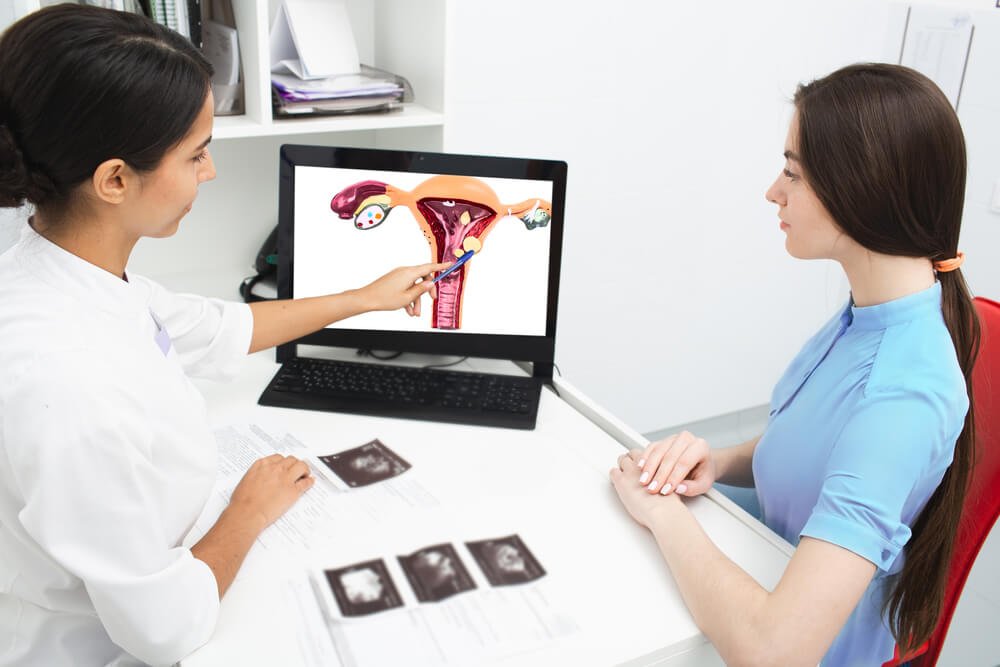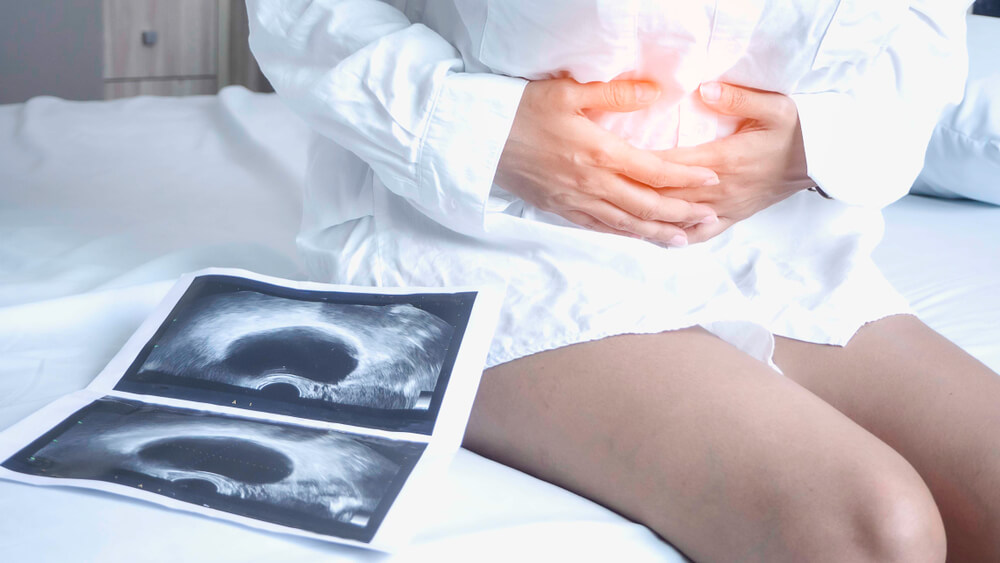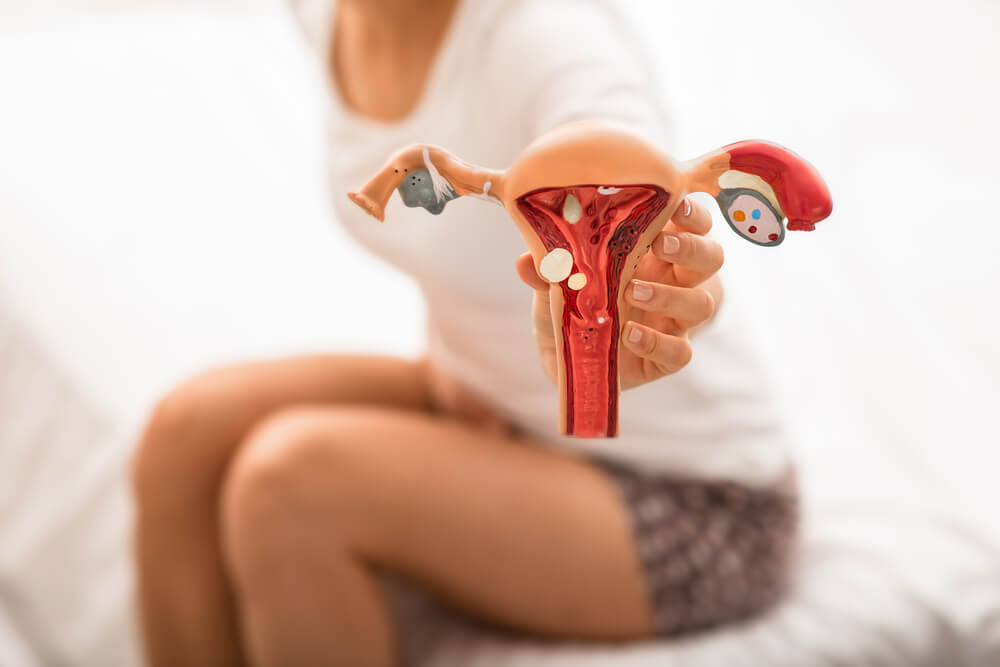Although the term “ovarian cyst” may sound frightening, often, there is no reason for concern. However, in some cases, ovarian cysts may cause symptoms such as ovulation pain, bloating, vomiting and nausea, and painful intercourse. One of the first ways to heal from ovarian cysts is to understand what they are and how you can treat them on time. In many cases, you may need to undergo ovarian cyst surgery.
What symptoms can ovarian cysts cause, and what are the risk factors that increase your chances of this condition? What are endometriomas? Find out all of the answers in this comprehensive article below.
Keep on reading for the rest.
What are Ovarian Cysts?
You may have ovarian cysts if you’re experiencing ovulation pain or other side effects. But what does this condition refer to? In a nutshell, ovarian cysts are pockets or sacs filled with fluid. They are located in your ovary or on the ovary’s surface.
Even though the term sounds terrifying, it’s important to remember that ovarian cysts are common. In fact, most women have this condition at some time.
Although most cysts in or on the ovary cause little to no discomfort in everyday life, some can cause severe symptoms. Ovarian cysts, particularly those that have ruptured, can cause pain, bloating, vomiting, and other side effects we discuss later in this article.
To stay healthy, we recommend getting regular pelvic exams. If you feel concerned, a skilled professional like Dr. Konstantin Nikitin will answer your questions and guide you through the treatment process.

Types of Ovarian Cysts
There are two categories of ovarian cysts, functional and cyst types unrelated to the function of the menstrual cycle. The first category includes the follicular cyst and the corpus luteum cyst. Whereas cyst types unrelated to the menstrual cycle function refer to the dermoid cyst, cystadenomas, and endometriomas.
What’s the difference between these two categories? Firstly, it’s essential to understand that the ovaries usually grow follicles (structures similar to cysts) monthly. These follicles produce progesterone and estrogen, two important hormones in the body. During ovulation, an egg is released.
If this monthly follicle continues to grow, you have a functional cyst. As mentioned, these two types include the corpus luteum cyst and the follicular cyst.
Typically, a functional cyst is harmless, and it rarely causes discomfort. Moreover, they often go away without the need for medical attention.
On the flip side, cyst types unrelated to the menstrual cycle function like cystadenomas and dermoid cysts can become abnormally large, causing the ovary to dislocate. Due to this, a woman can experience ovarian torsion or the painful twisting of the ovary. As a result, the ovary’s blood flow could decrease or stop.
Here are some quick facts on the different types of cysts.
A follicular cyst usually doesn’t have any symptoms, and it disappears in up to three months. In comparison, a corpus luteum cyst may need several weeks to disappear. However, in some cases, a corpus luteum cyst may grow to nearly four inches in width, causing discomfort. Also, a corpus luteum cyst might bleed or twist the woman’s ovary, causing pain. One of the biggest risk factors of a corpus luteum cyst is medications that cause ovulation.
You are less likely to develop a dermoid cyst or endometriomas. A dermoid cyst or a teratoma can contain teeth, hair, and skin (tissue) because they grow from embryonic cells. Most of the time, a dermoid cyst is not cancerous. As for endometriomas, they develop as a result of endometriosis. Some tissue parts may attach to the ovary, forming an abnormal growth.
Symptoms of Ovarian Cysts
In most cases, women with ovarian cysts don’t experience any symptoms, so they remain undiagnosed. However, in some instances, women with ovarian cysts may experience different side effects such as swelling, bloating, pressure, and aches in the lower abdomen. Usually, the pain is described as dull or sharp. When the cyst ruptures, the woman can experience sharp and sudden pain. Moreover, when the cyst causes twisting of your ovary, you may also experience vomiting and frequent nausea.
Some less common ovarian cyst symptoms include:
- Unusual vaginal bleeding
- Urge to urinate frequently
- Pelvic pain
- Painful intercourse
- Finding it challenging to empty the bowel or the bladder
- Unexplained weight gain
- Breast tenderness
If you find yourself experiencing some or all of these symptoms of ovarian cysts, consult your doctor immediately. The sooner you get diagnosed, the sooner you’ll be treated.
Ovarian Cysts and the Common Risk Factors
Any woman can develop ovarian cysts. However, certain women may be at higher risk than others. Some of the risk factors linked to ovarian cysts include:
- History of the condition
- Pregnancy
- Pelvic infection
- Hormonal issues (some women who use fertility drugs may develop ovarian cysts)
- Diagnosis of polycystic ovary syndrome or endometriosis
Unfortunately, there’s no way you can prevent ovarian cysts. However, by visiting your healthcare specialist frequently for regular pelvic exams, you’ll ensure that you get diagnosed with any irregularities before they have the chance to develop. Also, track your menstrual cycle and stay in tune with how your body is feeling.
How Will I Get Diagnosed for Ovarian Cysts?
If you’re experiencing the condition’s symptoms, reach out to a medical expert. Your doctor might do a regular pelvic exam to check for any irregularities and swelling on the ovary. If your doctor locates a cyst, you may be advised to proceed with tests and treatment. Some commonly used tests include:
- Ultrasounds.
- A pregnancy test (to rule out pregnancy).
- A blood test.
- A hormone level test.
In many cases, your doctor will advise a hormone level test to check whether you’re experiencing the symptoms due to other problems linked to your hormones. A blood test could also be helpful. In some cases, women past menopause may need to measure the amount of CA 125 (cancer-antigen) in the blood. If the cancer-antigen 125 is high, you might have ovarian cancer.

What are the Treatment Methods?
In many cases, ovarian cysts may disappear without the need for special treatment. However, in some cases, surgery may be required. According to the National Institutes of Health, around five to ten percent of women undergo surgery to remove ovarian cysts. Out of these cases, up to twenty-one percent are cancerous.
You may need surgery if the cyst does not disappear after a few menstrual cycles or if it gets larger. Moreover, cysts that look suspicious on the ultrasound and cysts that cause intense pain may also require surgery.
There are two types of surgeries that are effective in removing ovarian cysts. These include laparotomy and laparoscopy. If the cyst is large and it has the potential to be cancerous, your doctor may suggest laparotomy. On the flip side, more minor, benign-looking cysts may be removed via laparoscopy.
If you don’t need surgery, your medical expert may suggest certain pain medicines to aid in pain relief. Moreover, some women may want to consider using hormonal birth control (such as a vaginal ring, patch, shot, or pill) to prevent ovulation. In some cases, this method helps reduce the chances of getting multiple cysts.
When Should I See a Doctor?
If you are experiencing symptoms of ovarian cysts that affect your life quality, see a doctor immediately. Also, if you suspect you may have ovarian cysts, we suggest consulting with a medical expert.
Schedule an Appointment Today
If you’re looking for the best professionals in healthcare, we’ve got your back. Our team will help answer all of your dilemmas and offer you the ultimate treatments to achieve top-notch health. So give us a call today.


